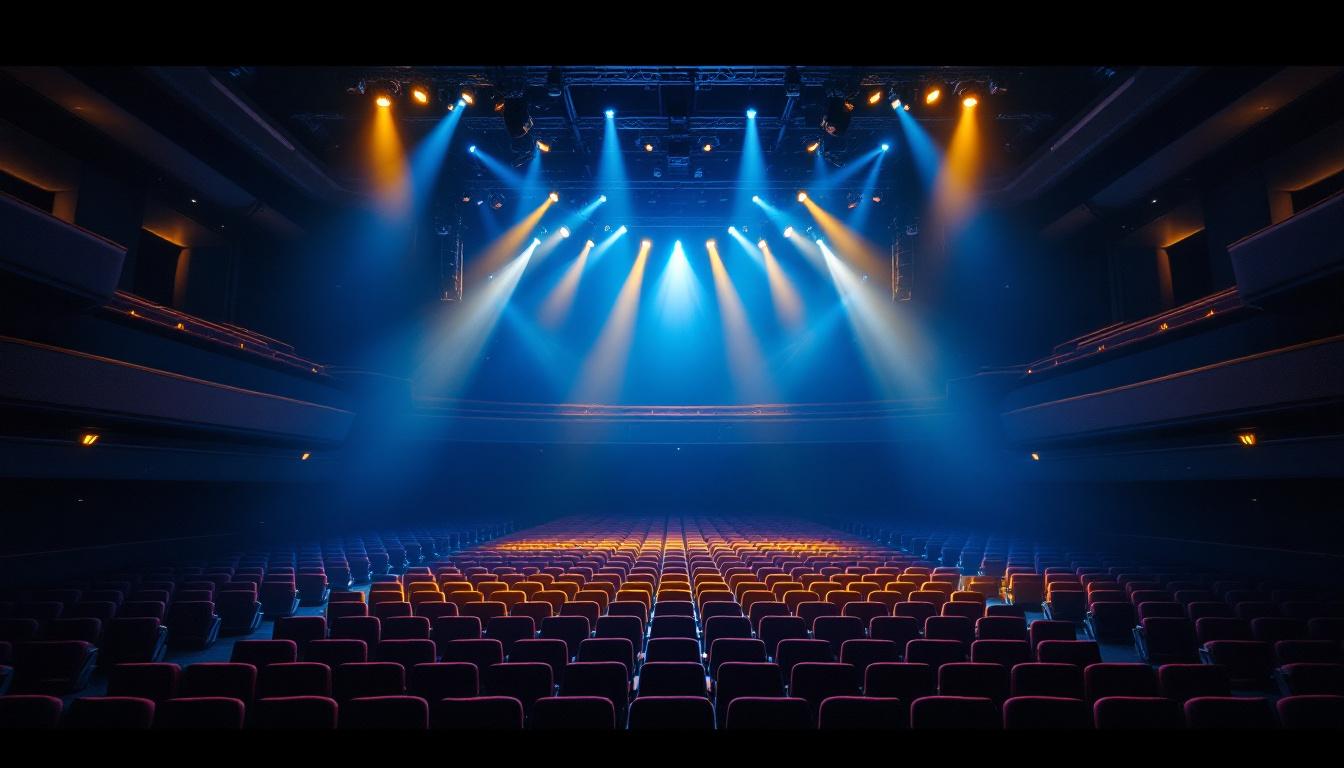
Auditorium lighting plays a crucial role in enhancing the overall experience of any event, whether it be a concert, lecture, or theatrical performance. The right lighting can transform a space, setting the mood and directing the audience’s attention where it is needed most. For lighting contractors, understanding the intricacies of auditorium lighting is essential to delivering a successful project.
This article outlines the key do’s and don’ts for lighting contractors involved in auditorium projects. By adhering to these guidelines, contractors can ensure that their lighting designs not only meet aesthetic goals but also comply with safety regulations and functionality requirements.
One of the primary considerations in auditorium lighting is the balance between illumination and ambiance. Different events require varying levels of brightness and color temperature to create the desired atmosphere. For instance, a dramatic play may benefit from dim, warm lighting that enhances the emotional weight of the performance, while a corporate presentation might require bright, even lighting to ensure visibility for all attendees. Additionally, the use of color can significantly impact the audience’s perception and engagement, making it essential for contractors to be well-versed in color theory and its applications in lighting design.
Moreover, the technical aspects of auditorium lighting cannot be overlooked. The integration of advanced lighting control systems allows for dynamic adjustments during performances, enabling seamless transitions between scenes or presentations. Lighting contractors must be familiar with various technologies, including LED fixtures, intelligent lighting systems, and dimming controls, to create versatile and responsive lighting designs. Understanding the acoustics of the auditorium is also vital, as improperly positioned lights can cause glare or shadows that detract from the overall experience. By considering both the artistic and technical elements of auditorium lighting, contractors can craft designs that not only captivate audiences but also enhance the functionality of the space.
Before any lighting design can be implemented, it is vital to assess the layout of the auditorium. Each auditorium has unique architectural features that can influence lighting choices. Consider the stage size, seating arrangement, and audience sightlines. Understanding these elements will help in determining the appropriate lighting angles and intensities.
Moreover, the height of the ceiling and the presence of any obstructions, such as balconies or sound equipment, must be taken into account. These factors will affect not only the placement of fixtures but also the type of lighting that can be effectively utilized. For example, a high ceiling may allow for the use of overhead spotlights that can create dramatic effects, while a lower ceiling might necessitate a more intimate lighting approach, utilizing softer washes to envelop the audience in warmth. Additionally, the materials used in the auditorium’s construction, such as wall colors and textures, can reflect or absorb light, further influencing the overall ambiance.
Different events require different lighting approaches. For instance, a theatrical performance may benefit from dramatic lighting effects, while a corporate presentation may prioritize clarity and visibility. It is essential to identify the primary purpose of the lighting in the auditorium. This understanding will guide the selection of fixtures, color temperatures, and control systems.
Consulting with event planners or venue managers can provide insight into the specific needs of the space. Such collaboration ensures that the lighting design aligns with the overall vision for the auditorium’s use. Furthermore, it is important to consider the emotional impact of lighting on the audience. For example, warm tones can evoke feelings of comfort and intimacy, making them ideal for concerts or community events, while cooler tones can create a more professional atmosphere suited for lectures or conferences. By carefully analyzing the intended mood and atmosphere, designers can craft a lighting scheme that not only meets functional requirements but also enhances the overall experience for attendees.
Layered lighting involves the strategic use of different types of lighting to create depth and dimension. This technique typically includes ambient, task, and accent lighting. Ambient lighting provides overall illumination, task lighting focuses on specific areas, and accent lighting highlights architectural features or performances.
By employing layered lighting, contractors can enhance the visual experience for the audience. This approach not only improves visibility but also adds an artistic element to the auditorium, making it more engaging for attendees.
Dimming capabilities are essential for creating dynamic lighting environments. The ability to adjust light levels allows for flexibility in setting the mood for various events. For example, a lecture may require bright, focused lighting, while a concert could benefit from softer, more dramatic lighting.
Incorporating dimming systems into the lighting design enables seamless transitions between different lighting scenarios. This adaptability is crucial for venues that host a wide range of events, ensuring that each occasion is enhanced by the appropriate lighting conditions.
Energy efficiency is a significant consideration in modern lighting design. Contractors should aim to use LED fixtures and other energy-efficient technologies that reduce power consumption while maintaining high-quality illumination. These choices not only lower operational costs but also contribute to sustainability efforts.
In addition to selecting energy-efficient fixtures, implementing smart lighting controls can further enhance energy savings. Automated systems that adjust lighting based on occupancy or time of day can significantly reduce energy waste, making the auditorium more environmentally friendly.
Safety regulations are paramount in any lighting installation. Contractors must ensure that all lighting designs comply with local codes and standards. This includes proper placement of fixtures to avoid glare, ensuring adequate emergency lighting, and maintaining clear pathways for audience movement.
Neglecting safety regulations can lead to hazardous conditions, potentially resulting in accidents or injuries. It is essential to conduct thorough inspections and obtain necessary permits before finalizing any lighting design.
Using incompatible fixtures can lead to a range of issues, including inconsistent lighting quality and increased maintenance costs. It is crucial to ensure that all lighting fixtures work harmoniously together, particularly when mixing different types of lights such as LEDs, halogens, and fluorescents.
Additionally, contractors should consider the color temperatures of the fixtures. Mismatched color temperatures can create an unappealing visual experience and detract from the overall ambiance of the auditorium. A cohesive lighting design requires careful selection of compatible fixtures that complement each other.
Maintenance is a critical aspect of any lighting installation. Contractors should consider the long-term upkeep of the lighting system during the design phase. This includes selecting fixtures that are easy to access for bulb replacements and repairs.
Furthermore, establishing a maintenance schedule can help ensure that the lighting remains functional and visually appealing over time. Ignoring maintenance needs can lead to degraded performance and increased costs in the long run.
Smart technology is revolutionizing the way lighting is controlled in auditoriums. Integrating smart lighting systems allows for remote control and automation, enabling contractors to create sophisticated lighting designs with ease. These systems can be programmed to adjust lighting based on the time of day, occupancy levels, or specific event requirements.
Moreover, smart technology can enhance the user experience by allowing event organizers to customize lighting settings for different performances or presentations. This level of control not only improves functionality but also adds a modern touch to the auditorium’s capabilities.
Color plays a significant role in setting the mood and enhancing the overall atmosphere of an auditorium. Contractors should consider incorporating colored lighting and effects to create unique experiences for various events. Techniques such as gobo projections, color washes, and moving lights can add visual interest and excitement to performances.
However, it is essential to use color thoughtfully. Overuse of colored lighting can be distracting or overwhelming for the audience. Balancing colored effects with traditional white lighting can create a harmonious environment that captivates attendees without detracting from the main event.
In a recent project for a community theatre, the lighting contractor implemented a layered lighting design that transformed the space. By combining ambient, task, and accent lighting, the theatre was able to enhance the visual experience for both performers and audiences. The use of dimmable LED fixtures allowed for versatile lighting scenarios, accommodating a range of performances from dramatic plays to musical concerts.
The contractor also prioritized energy efficiency, resulting in significant cost savings for the theatre over time. This project exemplified how thoughtful lighting design can elevate the overall experience while adhering to budgetary constraints.
Another successful project was completed in a university auditorium, where the contractor integrated smart technology into the lighting system. This allowed for seamless control of lighting during lectures, presentations, and events. The use of programmable settings ensured that the lighting could be tailored to each specific occasion, enhancing the learning and presentation environment.
The incorporation of color-changing fixtures added an exciting element to special events, such as graduation ceremonies and guest lectures. This project showcased the potential of modern lighting technology to create dynamic and engaging spaces.
Auditorium lighting is a complex yet rewarding aspect of lighting design that requires careful consideration and expertise. By following the outlined do’s and don’ts, lighting contractors can create effective and visually stunning environments that enhance the experiences of both performers and audiences.
From understanding the unique characteristics of the space to implementing advanced technologies, the possibilities for auditorium lighting are vast. By prioritizing safety, efficiency, and creativity, contractors can ensure that their lighting designs not only meet the needs of the venue but also elevate the overall experience for all who enter.
Ready to take your auditorium lighting projects to the next level? At LumenWholesale, we provide lighting contractors with the high-quality, spec-grade lighting products you need to create those visually stunning environments that captivate audiences. With our competitive wholesale prices and commitment to cutting out the middleman, you can access superior lighting products without the inflated markups. Our extensive selection adheres to the highest industry standards, ensuring reliability and high performance for your auditorium lighting designs. Plus, with the convenience of free shipping on bulk orders, you can enjoy premium lighting at the best value — all without hidden fees or compromises. Elevate your next project with the perfect blend of quality, affordability, and convenience at LumenWholesale.

Discover the transformative potential of solar LED tape for lighting contractors.

Discover how People Lighting can transform your projects by focusing on human-centric design.

Discover the pitfalls that even seasoned lighting contractors face with ballast lighting.

Discover the essential guide for lighting contractors on outdoor lights, featuring expert tips, innovative designs, and energy-efficient solutions to transform any space.